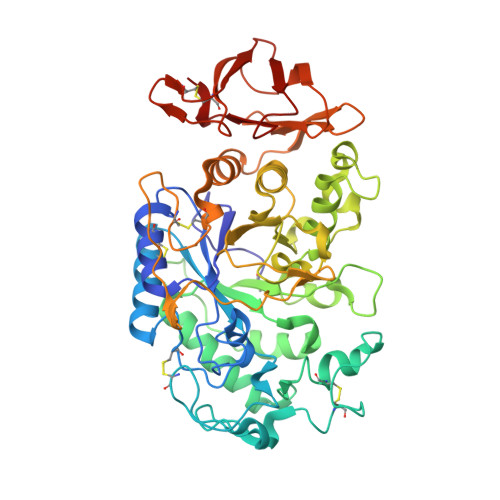Molecular Basis of the Effects of Chloride Ion on the Acid-Base Catalyst in the Mechanism of Pancreatic alpha-Amylase
Qian, M., Ajandouz, E.H., Payan, F., Nahoum, V.(2005) Biochemistry 44: 3194-3201
- PubMed: 15736930
- DOI: https://doi.org/10.1021/bi048201t
- Primary Citation of Related Structures:
1WO2 - PubMed Abstract:
Pig pancreatic alpha-amylase (PPA), an enzyme belonging to the alpha-amylase family, is involved in the degradation of starch. Like some other members of this family, PPA requires chloride to reach maximum activity levels. To further explain the mechanism of chloride activation, a crystal of wild-type PPA soaked with maltopentaose using a chloride-free buffer was analyzed by X-ray crystallography. A conspicuous reorientation of the acid/base catalyst Glu233 residue was found to occur. The structural results, along with kinetic data, show that the acid/base catalyst is maintained in the active site, in an optimum position, pointing toward the scissile bond-atom, due to the presence of chloride ions. The present study therefore explains the mechanism of PPA activation by chloride ions.
Organizational Affiliation:
Department of Chemical Biology, State Key Laboratory for Structural Chemistry of Unstable and Stable Species, Peking University, Beijing 100871, People's Republic of China.






















